Composite ‘Maximilian’ armour mainly early 16th century, but incorporating elements of the 19th century
Ferrous metal | RCIN 62999
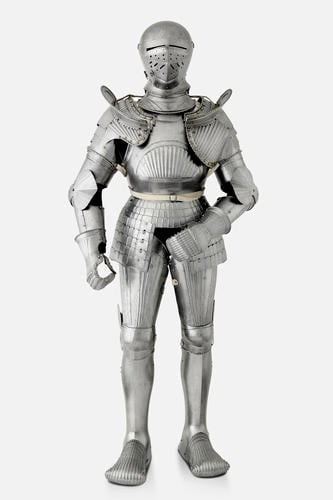
Southern Germany
Composite `Maximilian? armour mainly early 16th century, but incorporating elements of the 19th century

Southern Germany
Composite `Maximilian? armour mainly early 16th century, but incorporating elements of the 19th century
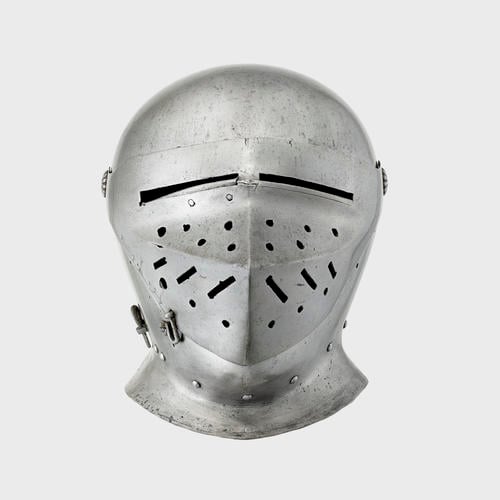
Southern Germany
Master: Composite `Maximilian? armour mainly early 16th century, but incorporating elements of the 19th century
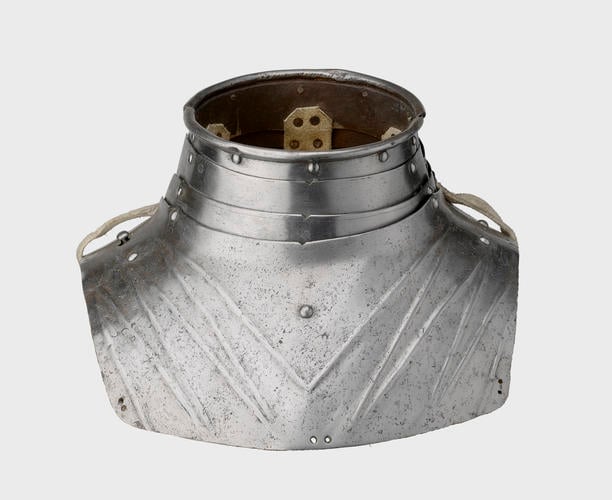
Southern Germany
Master: Composite `Maximilian? armour mainly early 16th century, but incorporating elements of the 19th century
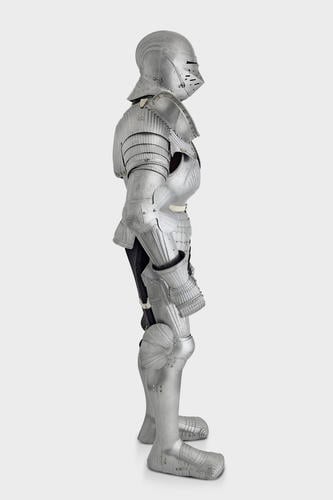
Southern Germany
Composite `Maximilian? armour mainly early 16th century, but incorporating elements of the 19th century

Southern Germany
Composite `Maximilian? armour mainly early 16th century, but incorporating elements of the 19th century

Southern Germany
Master: Composite `Maximilian? armour mainly early 16th century, but incorporating elements of the 19th century
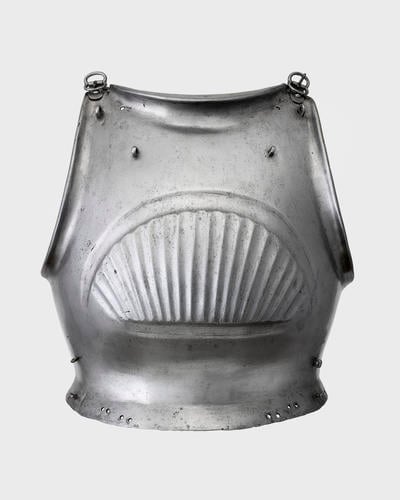
Southern Germany
Master: Composite `Maximilian? armour mainly early 16th century, but incorporating elements of the 19th century








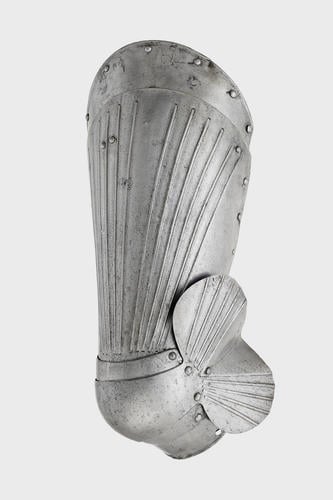
-
Composite 'Maximilian' armour, mainly South German, late fifteenth century, but incorporating some elements of the sixteenth and nineteenth centuries.
Consisting of a composite visored sallet, South German, early sixteenth century; an articulated gorget, South German, about 1530–40; a composite two-piece breastplate with articulated fauld, German, late fifteenth century; a pair of articulated tassets for tilt use, North Italian, about 1560–70; a four-piece backplate with articulated culet, South German, late fifteenth century; two narrow-fronted pauldrons, not a pair, German or north-west European, late fifteenth century; a pair of articulated vambraces, probably partly Flemish, about 1500; a pair of besagues, partly South German, late fifteenth century; a pair of mitten gauntlets, partly South German, late fifteenth century; a pair of long cuisses with articulated poleyns, partly South German, late fifteenth century; a pair of tubular greaves, partly South German, late fifteenth century; and a pair of articulated sabatons, nineteenth century in the German late fifteenth-century style.
The fluted decoration of the armour is in the so-called ‘Maximilian’ fashion, introduced, as its name suggests, in the reign of the Emperor Maximilian I (1493–1519). The earliest examples of the fashion, dating from about 1505–10, have sparse fluting, quite often arranged in groups. From about 1520 to 1535, however, the flutes became more numerous and close-set. This armour, being composite and partly restored, shows a mixture of both the earlier and the later versions of the style.
The fluting of the gorget differs from the other elements of the armour in being of the so-called ‘wolf ’s teeth’ fashion, formed of rows of zigzags. Such decoration is now of the greatest rarity. First recorded in the final decade of the fifteenth century, it appears to have survived little, if at all, beyond the first decade of the sixteenth century.
The breastplate of the armour, with its bold, angular turns, could conceivably have been made in Italy; either for domestic use or for export north of the Alps. Since it possesses no holes for the attachment of a lance-rest, it was presumably intended for infantry wear. The vambraces are of interest in being equipped with detachable wings, albeit restored ones.
Text adapted from Norman, A.V.B, & Eaves, I. 2016. Arms and Armour in the Collection of Her Majesty The Queen: European Armour, London.
Measurements: Helmet: height 26.8 cm width 21.9 cm depth 29.2 cm; Gorget: height 18.9 cm width 27.5 cm, internal diameter of neck-opening 13.3 cm; Breastplate: height from shoulders to lower edge of waist-flange 36.8 cm, width beneath arm-opening 35.9 cm, width at waist 28.7 cm; Fauld and Tassets: height 28.6 cm, width 47.0 cm; Backplate and Culet: height from shoulders to lower edge of culet 50.4 cm, width beneath arm-openings 37.2 cm, width at waist lower edge of backplate 29.3 cm, width of culet 34.3 cm; Right Pauldron: height 31.8 cm, width 31.8 cm; Left Pauldron: height 30.0 cm, width 28.6 cm; Right Vambrace: length 42.7 cm; Left Vambrace: length 43.2 cm; Right Gauntlet: length 26.8 cm; Left Gauntlet: length 27.3cm; Right Cuisse and Poleyn: length 51.8 cm; Left Cuisse and Polyen: length 50.2 cm; Right Greave and Sabaton: height 50.4 cm, length of foot 33.2 cm; Left Greave and Sabaton: height 50.8 cm, length of foot 33.2 cm.
Weights: Helmet: 1.673 kg; Gorget: 1.276 kg; Breastplate: 2.410 kg; Fauld and Tassets: 1.191 kg; Backplate and Culet: 1.871 kg; Right Pauldron: 1.616 kg; Left Pauldron: 1.871 kg; Right Vambrace: 1.247 kg; Left Vambrace: 1.191 kg; Right Gauntlet: 0.482 kg; Left Gauntlet: 0.510 kg; Right Cuisse and Poleyn: 1.162 kg; Left Cuisse and Polyen: 1.276 kg; Right Greave and Sabaton: 1.843 kg; Left Greave and Sabaton: 1.899 kg.Provenance
The close helmet may at one time have formed part of a distinctive group deposited as war-booty in the Imperial Arsenal of St Irene, Istanbul, probably following the surrender of the Knights of St John at Rhodes to the Ottoman Turkish forces of Süleyman the Magnificent (1495–1566) in 1522. It may have been brought with others to England during the nineteenth century, perhaps by Robert Curzon (1810-73).
The armour was transferred to Windsor Castle from the Armouries of the Tower of London in 1914. -
Creator(s)
(nationality)(nationality) -
Medium and techniques
Ferrous metal
Category
Object type(s)
Place of Production
Nuremberg [Bavaria]







